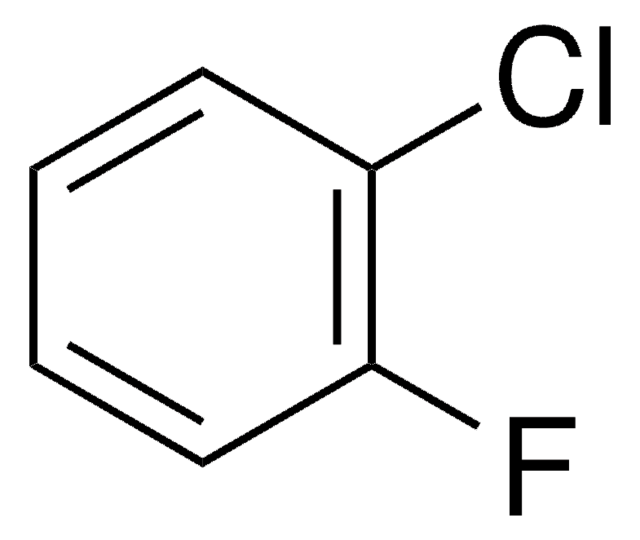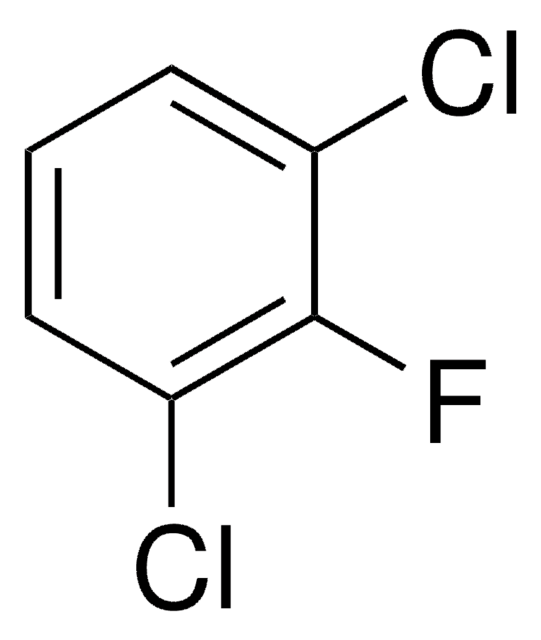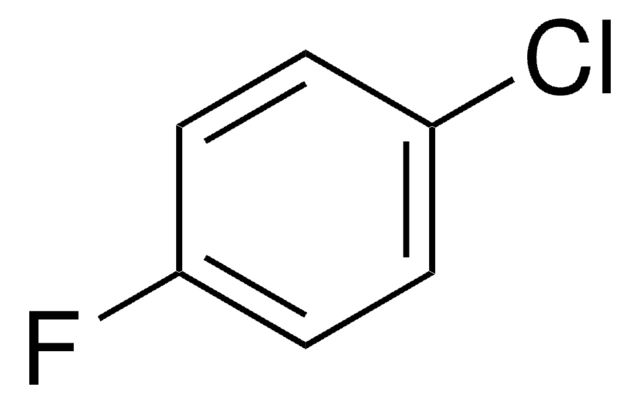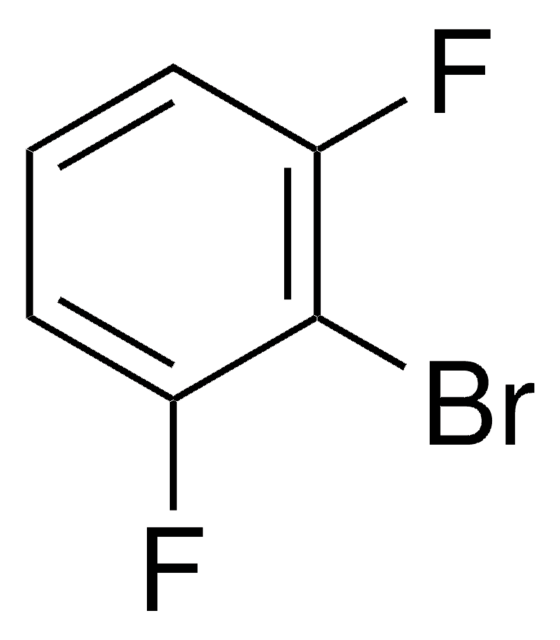All Photos(1)
About This Item
Linear Formula:
ClC6H4F
CAS Number:
Molecular Weight:
130.55
EC Number:
MDL number:
UNSPSC Code:
12352100
PubChem Substance ID:
NACRES:
NA.22
Recommended Products
Assay
99%
form
liquid
refractive index
n20/D 1.494 (lit.)
bp
126-128 °C (lit.)
density
1.219 g/mL at 25 °C (lit.)
functional group
chloro
fluoro
SMILES string
Fc1cccc(Cl)c1
InChI
1S/C6H4ClF/c7-5-2-1-3-6(8)4-5/h1-4H
InChI key
VZHJIJZEOCBKRA-UHFFFAOYSA-N
Looking for similar products? Visit Product Comparison Guide
General description
Reaction of 1-chloro-3-fluorobenzene radical cation with NH3 has been investigated by FT-ICR spectrometry. It reacts with n-butyllithium to yield bicycloadducts via trapping of intermediate benzynes.
Signal Word
Danger
Hazard Statements
Precautionary Statements
Hazard Classifications
Eye Irrit. 2 - Flam. Liq. 2 - Skin Irrit. 2 - STOT SE 3
Target Organs
Respiratory system
Storage Class Code
3 - Flammable liquids
WGK
WGK 3
Flash Point(F)
68.0 °F - closed cup
Flash Point(C)
20 °C - closed cup
Personal Protective Equipment
dust mask type N95 (US), Eyeshields, Gloves
Choose from one of the most recent versions:
Already Own This Product?
Find documentation for the products that you have recently purchased in the Document Library.
Antonio Ramírez et al.
Journal of the American Chemical Society, 126(45), 14700-14701 (2004-11-13)
The key elimination step for the formation of 3-chloro- and 3-fluorobenzyne from 2-chloro-6-fluorophenyllithium displays a pronounced solvent-dependent regioselectivity. 6Li and 13C NMR spectroscopic studies on 2-chloro-6-fluorophenyllithium reveal a single monomeric aryllithium, suggested by DFT computational studies to be a trisolvate.
Reactions of dihalobenzene radical cations with ammonia in the gas phase. Reactivity pattern for nucleophilic aromatic substitution.
Tholmann D and Gruetzmacher HF.
Journal of the American Chemical Society, 113(9), 3281-3287 (1991)
Oriol Planas et al.
Science (New York, N.Y.), 367(6475), 313-317 (2020-01-18)
Bismuth catalysis has traditionally relied on the Lewis acidic properties of the element in a fixed oxidation state. In this paper, we report a series of bismuth complexes that can undergo oxidative addition, reductive elimination, and transmetallation in a manner
Our team of scientists has experience in all areas of research including Life Science, Material Science, Chemical Synthesis, Chromatography, Analytical and many others.
Contact Technical Service










